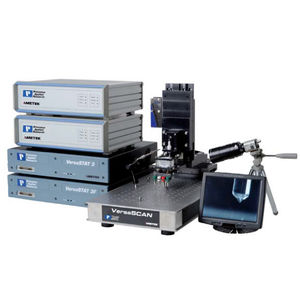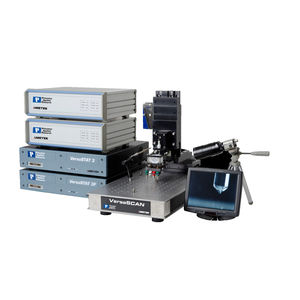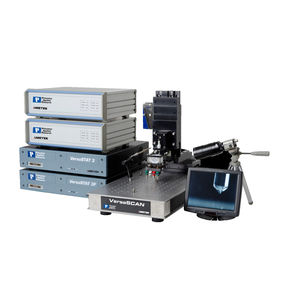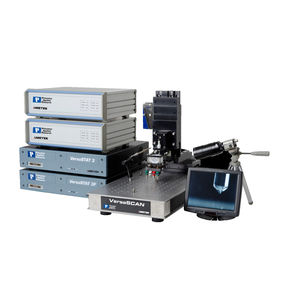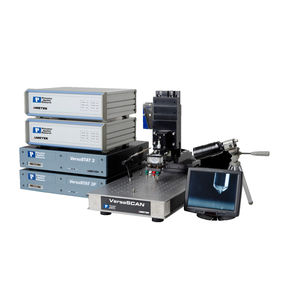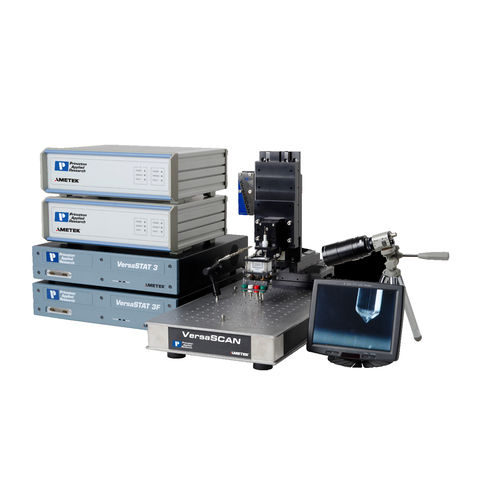
- Metrology - Laboratory
- Metrology and Test Equipment
- 3D scanner
- Princeton Applied Research
3D scanning system VS-SDCfor measuringprofilelaser
Add to favorites
Compare this product
Characteristics
- Number of axes
- 3D
- Applications
- for measuring, profile
- Technology
- electrochemical
Description
Scanning Droplet System (SDC) uses a compact peristaltic pump to force electrolyte through a small diameter tube and into a specifically designed head. This PTFE-based SDC head is machined to allow electrolyte to flow past an installed Reference Electrode and then to a port at the base of the head.
When the head is positioned sufficiently close to the sample a droplet forms between the head and sample. Tubing is also connected to an output port of the PTFE head. A second channel of the same peristaltic pump is then used to draw electrolyte past an installed Counter Electrode and out of the system. SDC experiments can be configured to either:
Apply a constant bias (potential, current or open (circuit) and increment position of the head creating a data map.
Apply a static or dynamic electrochemical signal, such as a EIS experiment, a Tafel plot, or a Cyclic Voltammetry experiment as the head is kept in a fixed location.
Since electrochemistry occurs at an electrode/electrolyte interface, only the portion of the sample that is in contact with the droplet is being measured. This allows experiments to study a small area of a large sample, without cutting the sample and thus limiting edge effects.
Catalogs
No catalogs are available for this product.
See all of Princeton Applied Research‘s catalogsOther Princeton Applied Research products
Scanning Electrochemical Systems
*Prices are pre-tax. They exclude delivery charges and customs duties and do not include additional charges for installation or activation options. Prices are indicative only and may vary by country, with changes to the cost of raw materials and exchange rates.



